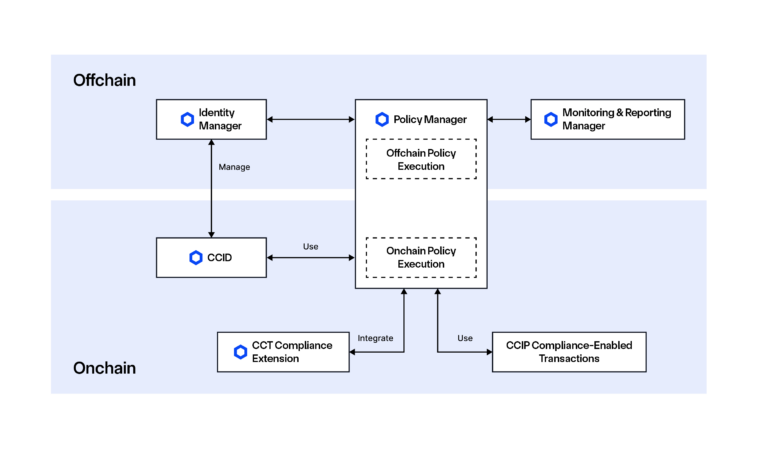Chainlink launches ACE – unified on-chain compliance standard for digital assets, integrating identity, policy, and access control on blockchain. The Automated Compliance Engine, built on Chainlink’s Runtime Environment (CRE) and supporting standards such as vLEI, ERC-3643, and CCID, enables financial institutions to migrate digital assets and related transactions on-chain without compromising regulatory compliance or exposing sensitive data.
If you’re actively trading, BloFin’s WOW2025 is live — with $4.2 million and a Tesla Cybertruck up for grabs. Register here.
ACE and CRE, CCID, ERC-3643, and vLEI Support

It seems Chainlink has already done more than anyone else to bridge the fragmentation within Web3 and close the gap with Web2. Their recent CCIP v1.6 upgrade alone is a milestone, as are numerous on-chain integrations, such as Chainlink with Coinbase Diamond, Chainlink with Ripple RLUSD, and Chainlink with Mastercard. And now we’re seeing another strategic step in this direction – Chainlink ACE.
Structurally, it is built on Chainlink’s own Chainlink Runtime Environment (CRE), which enables on-chain policy execution within a secure execution environment. The central component is the Policy Manager, used to configure KYC/AML restrictions, asset-based rules, rate limits, secure minting, and hold policies.
Another key element is its integration with CCIP and Credentialed Cross-Chain Identity (CCID), which enables the validation of users and assets across both public and private networks, maintaining regulatory compliance in a multichain environment.
It also includes support for the Verifiable Legal Entity Identifier (vLEI) from the Global Legal Entity Identifier Foundation (GLEIF), enabling the association of legal entities and transaction participants with verified digital credentials.
In collaboration with the ERC-3643 Association, they implemented the solution for issuing permissioned tokens with on-chain policy enforcement at the asset, platform, and jurisdiction levels.
Together, these capabilities promise to automate all aspects of interaction between regulated parties – from token creation to access control and compliance enforcement.
Institutional Use Cases for ACE
It’s important to note that ACE is not just a technology – it is a solution backed by highly significant partners.
Apex Group, which provides infrastructure for institutional asset tokenization exceeding $3.4 trillion, has implemented token issuance using the ERC-3643 and ONCHAINID standards with CCID support.
GLEIF, for its part, has made its vLEI data available on-chain for the first time, opening the door to global legal identification in digital assets.
In addition, ACE is already in use during Phase 2 of the e-HKD pilot under the Hong Kong Monetary Authority (HKMA). The system was used to identify investors from ANZ and Fidelity International in a transaction involving a digital fund, utilizing CCIP, CCID, and the Chainlink Digital Transfer Agent. This enabled a secure and regulation-compliant swap between a tokenized Australian dollar and the digital Hong Kong dollar.
Chainlink itself suggests multiple applications for ACE in digital assets:
- CCIP Compliance Transactions – issuance of settlement assets tied to jurisdiction-specific policies;
- Eligibility Allowlists – on-chain validation of access to DeFi protocols;
- Tokenized Fund Subscription – investor compliance during fund subscriptions;
- Cross-Chain Collateralized Loans – participation in lending pools based on on-chain policy rules;
- Secure Mint & Asset Hold Policy – token issuance control and asset freezing for sanctioned addresses.
As a result, ACE minimizes the need for manual verification and excessive data disclosure, allowing institutions to configure behavioral policies, handle sensitive data within an isolated environment, and unify off-chain credential providers into a single on-chain system.
If you’re actively trading, BloFin’s WOW2025 is live — with $4.2 million and a Tesla Cybertruck up for grabs. Register here.
Conclusion
This is indeed a fundamental development that targets all the key challenges of Web3 – from standardized and secure on-chain data exchange to integration with off-chain systems and even regulatory solutions. As such, ACE truly has the technical potential to become a standard, provided it becomes sufficiently popular and applicable. I would suggest closely watching Chainlink and its rapidly growing role in the on-chain and off-chain infrastructure of digital finance.





